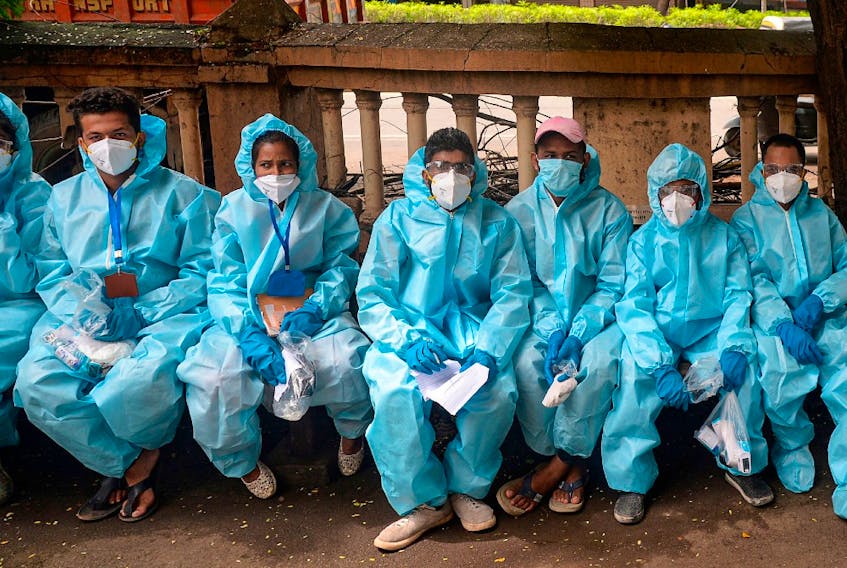Wild COVID-19 hypotheses dep’t: the last couple of months have seen an emergence of speculation about what epidemiologists — often , but not exclusively , amateur ones — are calling “immunological dark matter .” This is a metaphor borrowed from cosmology: astrophysicists can’t make the apparent size of the observed universe agree with its physical behaviour, so they have been busy for decades trying to find the undetected literal “dark matter” that might make up four-fifths of everything that exists.
When it comes to the spread of the virus that causes COVID, the immediate problem is to explain the great unaccounted heterogeneity in the impact of the virus across countries, regions, classes and ethnicities. It is at best unclear that different policy strategies explain all of these differences. So anything we can come up with, even if it’s just an educated guess, might help give new clues to treatment and prevention strategies.
The realm of COVID science will itself remain a bit of a wild frontier for the foreseeable future: this is a global emergency in which traditional peer review has lost prestige or at least been set politely aside, interdisciplinary ideas and amateurism are unusually well tolerated, and wild-ass guesses are welcomed.
We know that the herd immunity threshold for SARS-CoV-2 ought to be in the neighbourhood of 60 or 70 percent, and that some places hit especially hard — parts of Italy, some prisons and long-term care centres — have reached or approached this level. In other places, however, the epidemic curve has been behaving somewhat as though herd immunity was being approached despite much lower apparent incidence rates. Is it all because those places were smarter about lockdowns and mask usage? Or could there be “dark matter” of some kind obstructing the spread of the virus?
Anything we can come up with, even if it's just an educated guess, might help give new clues to treatment and prevention strategies.
On Friday two Israeli scientists — a married couple, a physicist and an oncologist — published a preprint that makes a daring, and probably untrue, conjecture . They propose the existence of a sort of herald of SARS-CoV-2, an unseen John the Baptist of corona.
The kernel of their idea is an empirical observation: in the early days after SARS-CoV-2 began to spread, countries close to China, whatever the size of their populations, had the most known cases of COVID-19. This is natural to the point of being obvious. The part that seems to demand an explanation is that much later in the pandemic — by which they really mean “now” — the correlation flipped the other way: it is now countries furthest from China that have had the most cases, and the number of cases in each country is correlated closely to their size. “Furthest” is measured here according to air-travel connections with China — an epidemiological proxy validated for purposes like this in the past — so that Toronto, for example, is considered much “closer” to China than Calgary.
What if, the paper asks, there were a slower-moving herald coronavirus that spread in Asia first — one that causes minor symptoms or none at all, but that imparts some immunity or resistance to SARS-CoV-2? Speculation about other coronaviruses possibly having this effect has endured throughout the pandemic, but the Israeli pair argue that they can use epidemological models to fit the pattern of global spread to a more specific scenario.
They postulate a herald virus with a natural epidemiological doubling time something like 40 per cent lower than that of SARS-CoV-2; it would have crossed to humans within China, but far from Wuhan (and possibly near Vietnam, which has pretty much just shrugged off COVID-19). If this happened, it must have taken place two or three months before the crossover of the second, crueller virus that we know about.
I am as tempted as you are to ask if this other precursor virus was also perched on the grassy knoll overlooking JFK’s motorcade. But you know how it is: if nobody checks out the grassy knoll, you’ll never be able to shut down the dumb conspiracy theories later.
It would be very good news indeed if there were a coronavirus that produced antibodies or other resistance to SARS-CoV-2 without causing major symptoms: it would amount to an existing natural vaccine. And, in fact, such a thing is not impossible even if the Israeli modelling is completely out to lunch, or beset by some ludicrous math error, as a preprint (or a peer-reviewed paper) might be. Meanwhile, be prepared to see more “immunological dark matter” talk. It certainly caught on in astronomy.
Copyright Postmedia Network Inc., 2020









